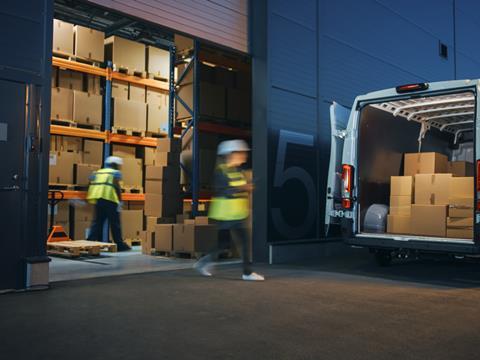
It’s no secret that the effect of COVID-related lockdowns on e-commerce trends was seismic. As a result, only packaging suppliers capable of rapid innovation could expect to thrive.
Ross Woodburn, managing director at BUBL Packaging, explores how manufacturers that adapted faster by using core skills and exploiting knowledge of specific sectors created opportunities for growth.
To indulge for a moment in understatement, the last two-and-a-bit years have been highly disruptive; the impacts of the pandemic continue to be felt, with many still adjusting to new ways of living and working.
When the first lockdown was imposed, the impact on retailers was seismic, with those who didn’t have a significant online presence suffering enormously; in such situations, when no – one could visit stores, a lot of retailers simply didn’t survive. In 2020, clothing and fuel volume sales fell by 21.5% and 22.2% respectively, according to figures from the ONS, and remain below pre-pandemic levels.
But if there is a silver lining to this very dark cloud then it was the opportunity presented to those retailers who did have a strong online presence, especially in sectors that boomed under lockdown – DIY, for example, or wines and spirits – amongst others; overall, online sales rose to a record high of 33.9% (as a share of all retail spending) in 2020, again according to the ONS.
This shift in how goods reached consumers created a knock-on increase in demand for new, innovative and secure packaging; no one wants a tin of paint or bottle of expensive wine to be damaged in transit.
So how did packaging companies respond, and what lessons have been learned, as a result of trying to meet this demand?
As in many spheres of business, responding quickly to changing circumstances is key to growth, indeed very often survival; for packaging designers and producers, adapting quickly to the conditions that emerged immediately after lockdown was simply business-critical.
To take one example, ceramics bought pre-lockdown at a bricks-and-mortar store would come in retail packaging designed to highlight their benefits (hopefully) and attract shoppers; but this is woefully inadequate for shipping through a courier network, so a new category of packaging solution had to be developed that prioritised protection ahead of selling – and it had to be done quickly.
But of course, it’s no use being quick if quality suffers; in such a rapidly evolving situation, getting it right the first time is equally important. This is where having strong core technology and highly flexible manufacturing can be a huge advantage. In addition, in-depth knowledge of the requirements in specific sectors confers similar advantages, so the manufacturer that specialises in packaging for niche product categories could thrive too.
Assuming the product is right, the next step is to ensure the whole process from sale to return works for the consumer; expectations are higher than ever for delivered product quality and for the returns process; getting it wrong, meaning it’s painful and/or expensive to return a product, costs reputational damage, ultimately lost sales.
So, a huge opportunity emerged for that class of packaging manufacturer that could innovate, adapt and specialise – quickly; what kind of organisation was best placed to do this, and why?
It may be something of a cliché, but when it comes to rapid product development and market introduction the smaller company is generally in a stronger position than the larger one; partly this is structural, larger companies tend to have more processes and layers of management – creating delays, and partly it is about the nature of larger companies generally, which tend to be more conservative, take fewer risks and are slower to innovate. After all, they have entrenched market positions to protect so risk-taking is often seen as, well, too risky.
For the smaller company, the opposite rules apply; innovating, by developing niche products or entering new markets – both of which are intrinsically risky - is everyday business. Doing these things quickly amplifies the advantages smaller firms enjoy; lessons are learned faster, so plans can be adapted faster, increasing the chances of success. So when the pandemic took grip those smaller companies were very well placed to exploit the opportunity.
In a sense, as the storm broke, nothing really changed; consumers still demanded products that were delivered on time, intact. But what they wanted changed, and they wanted it on a massive scale.
As the saying goes: “Life isn’t about waiting for the storm to pass, it’s about learning how to dance in the rain…”












No comments yet